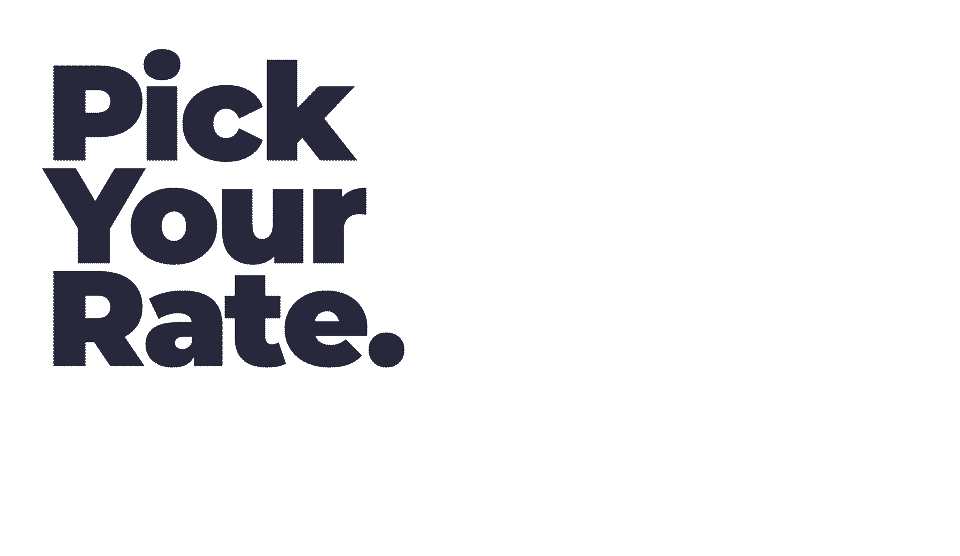
In this article
- What is a Conforming Loan and Why It Matters
- Understanding Conforming Loans: Key Concepts and Definitions
- Core Definitions
- Concept Relationships
- Why Conforming Loans are Important in the Mortgage Industry
- 2025 Conforming Loan Limits and Comparison Table
- Step-by-Step Guide to Getting a Conforming Loan
- Step 1: Assess Your Financial Readiness
- Step 2: Shop for Lenders and Get Pre-approved
- Step 3: Apply and Close on Your Conforming Loan
- Common Mistakes to Avoid with Conforming Loans
- Real-Life Example: Conforming vs Jumbo Loan Scenario
- FAQs about Conforming Loans
- Conclusion: Key Takeaways
What is a Conforming Loan and Why It Matters
A conforming loan is a conventional mortgage that meets Federal Housing Finance Agency (FHFA) dollar limits and follows guidelines set by Fannie Mae and Freddie Mac. In this guide, you’ll learn what conforming loans are, how they work, and how to qualify for one in 2025.
This comprehensive guide covers the 2025 loan limits (with a baseline limit of $806,500), qualification requirements, comparison with jumbo loans, and a step-by-step application process. Whether you’re a first-time homebuyer or looking to refinance, understanding conforming loans can help you secure lower interest rates and better terms.
The key benefit of conforming loans lies in their government-sponsored enterprise backing, which allows lenders to offer more competitive rates and terms compared to non-conforming loans. This makes homeownership more accessible for borrowers who meet the eligibility requirements.

Understanding Conforming Loans: Key Concepts and Definitions
Core Definitions
A conforming loan is a mortgage loan that adheres to the loan limits and underwriting guidelines established by the housing finance agency FHFA. These loans can be purchased by government sponsored enterprises like Fannie Mae and Freddie Mac, which allows lenders to sell them on the secondary market. Properties financed with a conforming loan must pass an appraisal confirming their value and structural integrity.
Related terminology includes:
- Conventional loans: Mortgages not backed by the federal government (includes both conforming and nonconforming loans)
- Government-sponsored entities: Fannie Mae and Freddie Mac, which purchase conforming mortgages
- Secondary market: Where lenders sell mortgages to investors, providing liquidity for more lending
- Nonconforming loans examples: Loans backed by the Department of Veterans Affairs (VA), Federal Housing Administration (FHA), and U.S. Department of Agriculture (USDA)
It’s important to note that not all conventional loans are conforming loans. While all conforming loans are conventional mortgages, conventional mortgages that exceed conforming loan limits become jumbo loans or nonconforming loans. Non-conforming loans include types such as government-backed loans, portfolio loans, hard money loans, and interest-only loans.
Check your rates. Start Here! (Dec 15th, 2025)Concept Relationships
Conforming loans connect to the broader mortgage ecosystem through this flow: FHFA sets loan limits → lenders originate mortgages within these limits → Mae and Freddie Mac purchase qualifying loans → loans are packaged into investment bundles → this creates liquidity for more loans at lower rates.
Key relationships include:
- Conforming loan limits → determine eligibility for GSE purchase
- Fannie Mae and Freddie → provide secondary market liquidity
- Mortgage-backed securities → allow investor participation
- Lower interest rates → result from reduced lender risk
This system allows conforming loans work by spreading risk across the mortgage markets while maintaining standardized underwriting guidelines.
Why Conforming Loans are Important in the Mortgage Industry
Conforming loans offer significant value through lower interest rates, standardized qualification processes, and broader accessibility. According to mortgage market data, conforming loans typically carry interest rates 0.125% to 0.375% lower than jumbo loans due to government sponsored enterprise backing.
Statistical benefits include:
- Approximately 70% of all mortgage loans originated are conforming loans
- Conforming loans are the most common mortgage loan type in the U.S.
- Average rate differences of 0.25 percentage points compared to nonconforming mortgages
- Access to down payment options as low as 3% for qualified borrowers
- Standardized documentation requirements across lenders
The impact on housing market accessibility is substantial. By allowing government sponsored entities to purchase these home loans, the system reduces lender risk and maintains consistent mortgage rates across different credit unions, banks, and other lenders. This standardization helps borrowers qualify for a conforming loan more easily and predictably.
See how much you can afford. Start Here! (Dec 15th, 2025)2025 Conforming Loan Limits and Comparison Table
| Property Type | Baseline Limit | High-Cost Areas | Alaska/Hawaii/Guam/Virgin Islands |
|---|---|---|---|
| Single-family | $806,500 | $1,209,750 | $1,209,750 |
| 2-unit | $1,032,975 | $1,549,300 | $1,549,300 |
| 3-unit | $1,248,225 | $1,872,150 | $1,872,150 |
| 4-unit | $1,551,350 | $2,326,650 | $2,326,650 |
Conforming vs Non-Conforming Loan Features:
| Feature | Conforming Loans | Jumbo Loans |
|---|---|---|
| Interest rates | Lower (GSE-backed) | Typically higher |
| Minimum down payment | 3% possible | Usually 10-20% |
| Minimum credit score | 620 FICO | 700+ FICO |
| Loan amount | Up to conforming limit | Above conforming limit |
| Availability | Widely available | Limited lenders |
The baseline loan limit of $806,500 applies to most areas, while higher cost areas can access limits up to $1,209,750. These different loan limits reflect regional variations in average home price across the United States.
Step-by-Step Guide to Getting a Conforming Loan
Step 1: Assess Your Financial Readiness
Before applying for conforming mortgage loans, evaluate your financial position:
- Check credit score requirements: Most lenders require a minimum credit score of 620 FICO, though a higher credit score improves your rates
- Calculate debt-to-income ratio: Keep total monthly debt payments under 45-50% of gross income
- Determine down payment options: Conforming loans allow down payments as low as 3%, though lower down payment amounts require private mortgage insurance
- Review employment history: Lenders typically require two years of stable employment and income documentation through tax returns and pay stubs
Step 2: Shop for Lenders and Get Pre-approved
Compare options across different types of lenders:
- Research rates: Contact banks, credit unions, and online lenders like Rocket Mortgage for rate comparisons
- Gather required documents: Prepare W-2s, recent pay stubs, bank statements, and tax returns for documentation requirements
- Submit pre-approval application: Get a pre-approval letter showing your borrowing capacity within conforming loan limits. Getting preapproved can help expedite the financing process and demonstrate seriousness to sellers.
- Understand loan terms: Choose between 15-year vs 30-year terms and fixed vs adjustable rate mortgage options
Step 3: Apply and Close on Your Conforming Loan
Navigate the final application process:
- Submit official application: Complete your mortgage loan application once you have a purchase contract
- Work through underwriting: Respond promptly to lender requests for additional documentation per other guidelines. Lenders will monitor your credit and spending closely until your mortgage closing date.
- Review final terms: Understand your interest rate, monthly payment, and closing costs
- Complete closing: Sign loan documents and prepare for potential loan servicing transfers
Remember that conforming loans carry greater standardization, making the process more predictable than nonconforming loan alternatives.
Customize your rate in minutes. Start Here! (Dec 15th, 2025)Common Mistakes to Avoid with Conforming Loans
Mistake 1: Exceeding loan limits accidentally – Always verify local conforming loan limit before house hunting. What qualifies as conforming can vary widely between counties, especially in higher cost areas.
Mistake 2: Making large purchases during application – Avoid opening new credit accounts or making major purchases that could affect your debt-to-income ratio and minimum credit score requirements.
Mistake 3: Not comparing rates from multiple lenders – Even though all conforming mortgages follow similar underwriting guidelines, mortgage rates can still differ between lenders.
Pro Tip: Use FHFA’s online loan limit lookup tool to confirm your area’s limits, and maintain stable finances throughout the application process to ensure you qualify for a conforming loan at the best available rates.
Check rates based on your unique situation. Start Here! (Dec 15th, 2025)Real-Life Example: Conforming vs Jumbo Loan Scenario
Case Study: Sarah saved $200/month by choosing a conforming loan strategy in an expensive market
Starting situation: Sarah needed an $850,000 loan in a high-cost area where the conforming loan limit was $806,500. She faced choosing between a single jumbo loan or structuring her financing to stay within conforming limits.
Steps taken: Instead of accepting a jumbo loan at 7.25% interest rate, Sarah used an 80-10-10 financing strategy:
- First mortgage: $806,500 conforming loan at 6.875%
- Second mortgage: $43,500 home equity loan
- Down payment: $43,500 (remaining 10%)
Final results:
- Monthly payment savings: $198/month compared to single jumbo loan
- Total interest savings: $71,280 over 30-year loan term
- Maintained access to conforming mortgage loan benefits
| Financing Strategy | Interest Rate | Monthly Payment | Total Interest |
|---|---|---|---|
| Single Jumbo Loan | 7.25% | $2,847 | $524,920 |
| Conforming + HELOC | 6.875% / 8.5% | $2,649 | $453,640 |
| Monthly Savings | – | $198 | $71,280 |
FAQs about Conforming Loans
Q1: What is the 2025 conforming loan limit in my area?
A1: The baseline limit is $806,500 for most areas, but high-cost areas can go up to $1,209,750. Alaska, Hawaii, Guam, and the Virgin Islands have special higher limits. Use FHFA’s online lookup tool for your specific county’s conforming loan limits.
Q2: Can I get a conforming loan with less than 20% down?
A2: Yes, conforming loans allow down payment options as low as 3% for qualified borrowers. However, you’ll need private mortgage insurance when your loan amount exceeds 80% of the home’s value.
Q3: How do conforming loan rates compare to jumbo loan rates?
A3: Conforming mortgage loans typically offer interest rates 0.125% to 0.375% lower than jumbo loans because loans carry greater government backing through Fannie Mae and Freddie Mac, reducing lender risk.
Q4: Who regulates conforming loan limits?
A4: The Federal Housing Finance Agency (FHFA) sets limits annually based on housing price index changes. These adjustments are typically announced each November for the subsequent year and reflect changes in average home price data that’s seasonally adjusted. The FHFA uses the House Price Index report to determine the next year’s loan limits based on the October-to-October percentage increase or decrease in average house prices.
Conclusion: Key Takeaways
Understanding conforming loans provides significant advantages for most homebuyers. Key points to remember:
- 2025 conforming loan limits: Baseline of $806,500 with up to $1,209,750 in high-cost areas
- Cost savings potential: Lower interest rates compared to jumbo loans can save hundreds monthly
- Accessible qualification: Minimum down payment of 3% and credit scores as low as 620 FICO
- Wide availability: Offered by most lenders including banks, credit unions, and online platforms
- Annual adjustments: Loan limits change yearly based on housing market conditions. The annual adjustments in loan limits are generally automatic because they correlate with home price changes.
The mortgage market benefits significantly from the conforming loan system, as government sponsored enterprises provide stability and liquidity that translates to better borrower terms. Whether you’re buying your first home or refinancing existing mortgage loans, staying within conforming loan limits typically offers the best combination of rates and terms.
Next steps: Check your local conforming loan limit using FHFA’s online tool, get pre-approved with multiple lenders to compare rates, and consult with a mortgage professional to determine if conforming loans work best for your situation. Remember that these limits adjust annually, so timing your home purchase within the current year’s parameters can maximize your savings potential.

